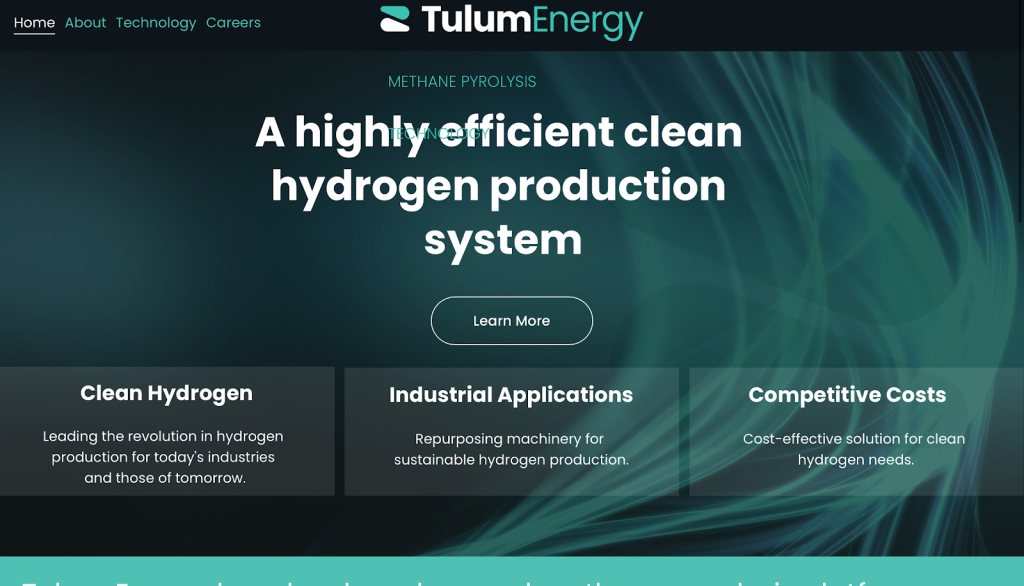Tulum Energy Raises $27M to Power the Future of Sustainable Industrial Heat
July 14, 2025
byFenoms Startup Research

Tulum Energy has raised $27 million in a landmark funding round aimed at revolutionizing how industrial heat is generated. Led by CDP Venture Capital SGR’s Green Transition Fund, with participation from TDK Ventures, TechEnergy Ventures, MITO Technology, and Doral Energy-Tech Ventures, the round positions Tulum as a critical player in the race to decarbonize heavy industry. At the helm is Max Pieri, whose team is pioneering next-generation electric thermal systems that dramatically reduce CO₂ emissions in high-heat manufacturing.
Tulum is targeting a problem few dare to tackle: the carbon-intensive world of industrial process heat. From cement and steel to glass and chemicals, these sectors rely on massive amounts of energy - most of it derived from fossil fuels. Tulum's solution is both simple and groundbreaking: clean, electrified modular heat systems that can slot into existing industrial environments without requiring full-scale redesigns.
Why Industrial Heat Needs Disruption Now
As climate targets tighten, pressure is mounting on industries to cut their carbon footprints. But while power generation and transport have made significant progress toward decarbonization, industrial heat remains one of the biggest unsolved challenges in the climate crisis.
According to the International Energy Agency (IEA):
- Industrial processes account for ~25% of global CO₂ emissions.
- Heat production represents 74% of total industrial energy use, with the majority still powered by fossil fuels.
- Only 10% of industrial heat is currently electrified, due to technical, cost, and retrofit barriers.
Further, a report by McKinsey & Company estimates that electrifying industrial heat processes could cut emissions by up to 1.8 gigatons of CO₂ annually by 2050, making it one of the most impactful shifts in global decarbonization strategy.
These stats underscore just how ripe the sector is for transformation - and why VCs are now rushing to back companies like Tulum.
Tulum’s Strategy: Clean Heat Without the Friction
Tulum's offering stands apart because it addresses the infrastructure friction that has historically blocked electrification in factories. The startup's modular electrified heat systems offer precision temperature control, scalability, and seamless integration into existing workflows - making them not just eco-friendly, but operationally attractive.
Tulum is a textbook example of how climate tech can win not just through innovation, but through infrastructure empathy. By respecting the realities of existing industrial systems and designing for integration - not disruption - they’ve removed one of the biggest barriers to clean tech adoption. Founders tackling entrenched industries should study this: the path to transformation often starts with compatibility, not reinvention.
In other words, don’t just build the better system. Build the system that gets used.
Market Outlook: The Rise of Electrified Heat
The global market for industrial heat electrification is projected to reach $63 billion by 2031, according to a report by Allied Market Research, driven by decarbonization mandates, energy security concerns, and corporate net-zero targets.
Complementing this, BloombergNEF recently noted that over 70% of Fortune 500 manufacturers now include emissions from industrial heat in their climate risk models - indicating surging buyer-side demand for sustainable heat alternatives.
Investment is surging as well:
- The EU Green Deal allocates billions for industrial decarbonization, including heat electrification.
- In the U.S., the Inflation Reduction Act (IRA) provides significant incentives for clean industrial retrofits.
- Carbon pricing policies in over 60 countries are accelerating urgency to adopt low-emission processes.
This confluence of regulation, economic pressure, and technological readiness makes Tulum’s timing near perfect.
What’s Next for Tulum Energy
With fresh capital, Tulum Energy plans to:
- Expand manufacturing and deployment across Europe and North America
- Invest in R&D to further increase heat efficiency and output range
- Scale partnerships with industrial clients in cement, steel, and chemicals
- Hire commercial and technical talent to support growth and system rollouts
Their ultimate goal? To become the standard infrastructure layer for clean industrial heat.









